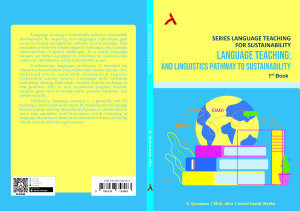Series Language Teaching For Sustainability: Language Teaching And Linguistic Pathways To Sustainability
About this ebook
Penulis : G. Gunawan, Muh. Jafar dan Ismail Suardi Wekke
Ukuran : 15,5 x 23
Tebal : 166 Halaman
Cover : Soft Cover
No. ISBN : 978-623-8756-06-3
No. E-ISBN : 978-623-8756-07-0 (PDF)
Terbitan : February 2025
SINOPSIS
Language education holds immense potential as a catalyst for fostering environmental consciousness and sustainable practices. By integrating sustainability themes into language curricula, educators can empower learners to become critical thinkers, effective communicators, and engaged global citizens. Through the exploration of environmental issues, students develop the linguistic competence to discuss complex challenges, propose solutions, and advocate for change. Moreover, language learning can foster intercultural understanding and appreciation for diverse perspectives on sustainability, promoting collaboration and cooperation across boundaries.
A linguistic pathway to sustainability involves a holistic approach that encompasses various dimensions of language education. Ecolinguistics, a field that investigates the relationship between language and the environment, provides a theoretical framework for analyzing how language shapes our perception of the natural world. By examining the language used in media, politics, and advertising, learners can develop a critical awareness of how discourse influences attitudes and behaviors towards the environment. Additionally, content-based instruction, which integrates language learning with specific subject areas such as environmental science, offers opportunities for in-depth exploration of sustainability topics.
Ultimately, language teaching and linguistic pathways to sustainability aim to cultivate a generation of environmentally literate individuals who can contribute to a more just and equitable world. By equipping learners with the language skills and critical thinking abilities to address complex environmental challenges, educators can play a pivotal role in shaping a sustainable future.





